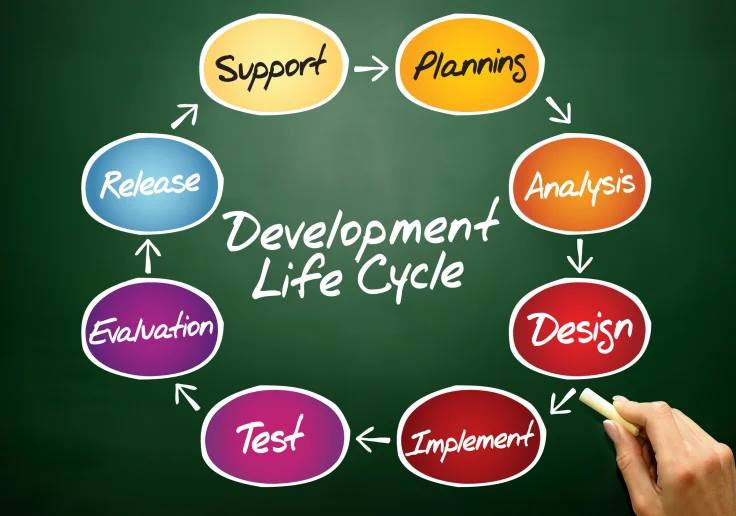Instead, with DevOps, the team who comes up with an idea for an improved software should also build the software and run the software. The above is merely a representation of the type of KPIs that organizations can measure for and these will differ depending on the needs of an organization. Having seen what makes the anti-types bad, we can look at some topologies in which DevOps can be made to work. devops org structure In hierarchical organizations, any beginnings are nipped in the bud, and, as a result, employees begin to feel helpless. On the other hand, in such organizations, the difference in the balance of power and the status of employees contributes to efficiency. If the organization is undergoing a massive reorganization aimed at eliminating the hierarchical structure, this can lead to certain problems.
If you’re a systems administrator with Linux skills and experience across a range of IT management and monitoring tools, congratulations — you’re well on your way to fitting into a typical DevOps organizational structure. Pick up hard skills in programming, orchestration, cloud administration and automation to support a DevOps methodology. Place high importance on communication, as well as project and change management, to share this vital IT knowledge with other members of the team. Starting your DevOps transformation will require diligence, but the payoffs of a well-managed system will be more than worth the efforts. Forming cross-functional teams that integrate each discipline of the production chain (dev, testing, and ops) will require special attention for creating solid lines of communication. By engendering a culture of communication throughout your organization, you will empower collaboration within teams and between them that will improve development speed and product quality.
Anti-Type B: Separate DevOps Silo
A C4E supplements DevOps and agile efforts due to the collaborative team structure that it builds and the self-reliant and productive environment that it creates. It’s likely to succeed if the team has members from both existing teams and where it’s a stepping stone to cross-functional teams. The original idea for DevOps wasn’t to change team structures at all. It was about development and operations teams working more closely to deliver software. After identifying and fixing systemic value-damaging behaviors, collaboration becomes possible. Devs today are creating, monitoring, and maintaining infrastructures, roles that were traditionally the province of ops pros.
- Retrospectives give time for team members to talk about what happened in the past couple of weeks and what they felt went right and what didn’t work for them.
- Notwithstanding the foregoing, the mono-functional teams typically have many advantages.
- Retrospectives also provide valuable data concerning the success of the process and its approval rating from the team members utilizing it.
- Applications like Zoom, Slack, and Microsoft Teams are also necessary for teams to communicate quickly and efficiently, especially in a remote-first world.
- After 17 years of reporting on the API economy, ProgrammableWeb has made the decision to shut down operations.
Keeping each deliverable to a smaller, more manageable size helps to maintain the quality of work while accelerating the speed at which changes can be made. All organizations are composed of value streams, regardless of whether they have been made visible, and most large organizations have complex networks of interconnecting value streams. But once you’ve mapped them, you can start seeing where they connect and manage the dependencies. Ultimately the goal is to break these dependencies since they cause delays and risk, but it’s hard to do that when they can’t be seen. A DevOps team mindset differs from traditional IT or scrum teams as it is an engineering mindset geared towards optimizing both product delivery and product value to the customers throughout a product’s lifecycle.
How a Center for Enablement Improves DevOps Team Structures
Underperforming teams happen when you don’t build in the need for people to work together to unlock their unique talents. Human skills like collaboration and creativity are just as vital for DevOps success as technical expertise. This DevOps Institute report explores current upskilling trends, best practices, and business impact as organizations around the world make upskilling a top priority. Retrospectives give time for team members to talk about what happened in the past couple of weeks and what they felt went right and what didn’t work for them. This allows teams to agree on processes they will employ over the coming weeks without creating too much friction because they know the processes can be modified if they end up not working in everyone’s best interest. A system like this allows teams to be more productive through the use of experimentation instead of wasting too much time on theorizing.

Typically, this will happen with some sort of pilot team that acts as the seed for the organization’s DevOps culture. A C4E enables organizations to transform their IT teams into strategic business partners, as opposed to traditional technology functions. A C4E is a cross functional team that operates across central IT, Line of Business (LOB) IT, and digital innovation teams. These teams work together to ensure that the assets the team creates are consumable, consumed broadly, and fully leveraged across the organization.
Don’t neglect your IT architect skills in cloud, DevOps projects
The designer doesn’t feel the pain of having to maintain what was designed, so designs don’t get better. There are many ways and different steps to take in order to organize DevOps teams. The steps outlined above are by no means the only way to pursue DevOps. Organizations will have to choose the steps and structures that work best for them. An example of how this looks in practice can be illustrated with one of our customers, Cox Automotive. The automobile dealer and buyer witnessed significant growth after acquiring over 20 companies.

Many organizations were already familiar with cross-functional teams. Unsurprisingly, operations folks began moving into existing software delivery teams to work with other disciplines, like software developers, testers, and product managers. So having teams that collaborate with some or significant levels of cooperation are the teams that will most likely succeed. Continuous delivery is the process of releasing software in smaller increments.
Using DevOps PATHS
Adopting DevOps and hiring DevOps experts or an agency following DevOps structure ??n turn ?ut t? be v?lu?ble f?r ? business to im?lement it wisely. It is beneficial because it has increased speed and agility when deploying new functionality. But this also means monitoring becomes more crucial than ever from an operations standpoint. Every DevOps organization has a strong culture of trust and cross-team collaboration.

Used together, these measures ensure the teams are doing the right things right and moving in the right direction. Value stream orientation promotes team diversity by recognizing the individual background (cross-functionally) into the value delivered to the customer. Whichever organization model you choose, remember the idea of DevOps is to break down silos, not create new ones.
Developer experience metrics
In this model, a single team has shared goals with no separate functions. The reason it’s called “no ops” is because ops is so automated it’s like it doesn’t actually exist. These DevOps teams need to be inclusive, bring other teams into the culture of DevOps and show them by example how shared responsibilities and a collaborative culture helps the project and the organization as a whole. They have to work on sharing their knowledge and their lessons learned. And they have to strto makeking themselves obsolete; eventually all teams should be embracing DevOps and their team is no longer needed.

I had a call with someone from Microsoft Dev Ops, did a screen share and showed them the structure. She said that the way we have it currently split out works better and is the recommended method. I feel this goes against the published guide listed above and explained that. But given our natural tendency to have it setup this way coupled with MSFT’s response I think this will work for our needs. So, for most of the projects where we will maintain the code for the long term, we will put it under our org, but continue to make different projects so we can have our own build processes, teams, boards etc.
Anti-Pattern #3: Dev, Ops, and DevOps Silos
This kind of collaboration has been avoided in the past which created communication silos where each discipline works in their own bubble and then hands off their work to the next discipline in the development chain. Siloing creates bottlenecks and makes it easy for communication to get lost in translation. While the actual work a team performs daily will dictate the DevOps toolchain, you will need some type of software to tie together and coordinate the work between your team and the rest of the organization.